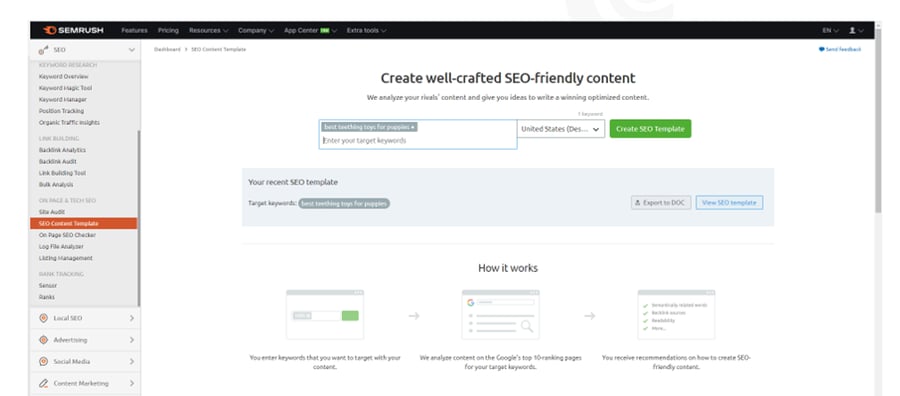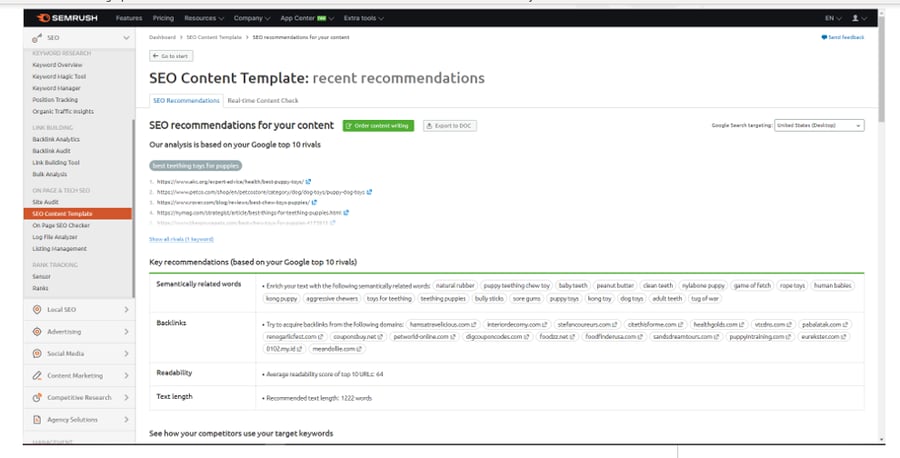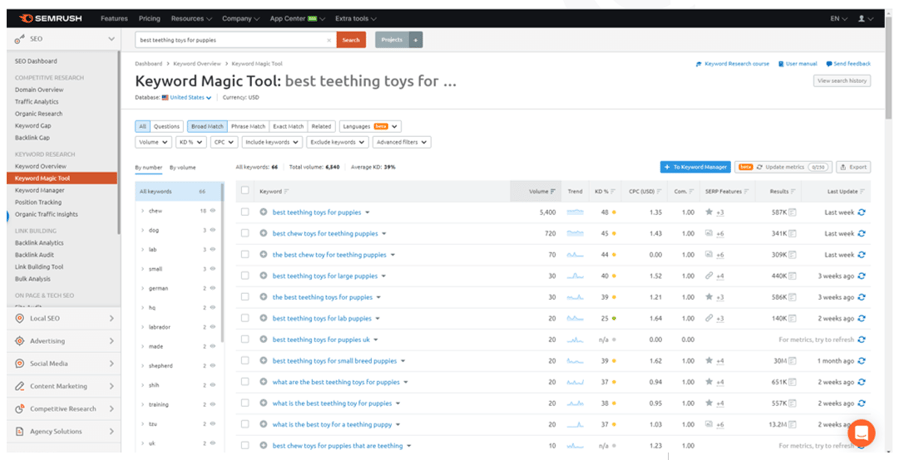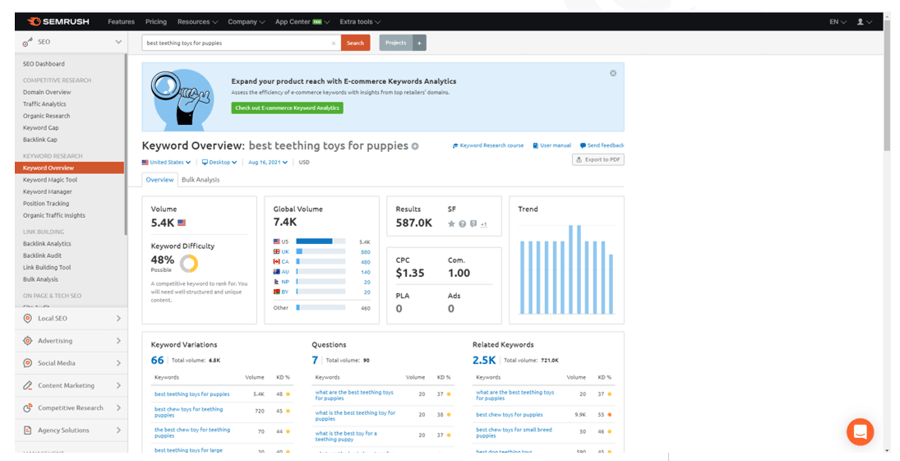How to Find Keywords: Best Practices for Beginner Marketers
Content Marketing SEO Strategy Blogging

Ask almost any inbound marketer and you’ll learn they have their own way of finding keywords, their own tricks, and their favorite keyword research tool to use.
For someone starting out, keyword research can be overwhelming. Where do you start? How do you use the tools? How do you do it right?
We’re not only going to tell you how to find keywords, but we’re going to give you the rundown on all our inside tips and tricks. First off, let’s talk about what keyword research is.
An Intro to Keyword Research
Every day, there are over 5 billion (!!) searches on Google alone. This means each person uses a search engine on average three to four times a day. Keyword research is the process of homing in on these searches based on what your audience is trying to find on the internet.
Initially, you try to think like your clientele when brainstorming keyword ideas. Then, you analyze and research which of those ideas is the best.
Keyword research should be incorporated in every piece of content on your website so your blog posts, pillar posts and templates are easy to find by your intended audience and rank high in their searches.
Now, let’s go over the process of finding these keywords.
Finding Keywords
There isn’t one perfect way of finding keywords, and as you go you will probably change and tweak your strategy. My thought process for finding keywords can be broken down into three simple steps:
Step 1: Starting Your Thought Process
The first step is thinking about what your audience is trying to find. So, ask yourself this question: “If I were my customer, what would I search?”
Here’s an example: If I were the owner of an online pet supply store and thinking about what my consumers would search, I would probably come up with a list containing terms like this:
- Pet food
- Dog toys
- Aquarium
- Cat litter
- Hamster wheel
At this point, I have a broad list of short keywords that relate to my business.
That’s a great start. But here’s how to make it really effective.
Many people using search engines know they get better results when they use more specific, lengthy keywords. This is what we call long tail keywords. These are niche keyword phrases that are more specific than general, high-level keywords.
If we continue with the pet store example, a few long tail keywords come to mind:
- Where can I buy cheap cat litter
- Best teething toys for puppies
- 20 gallon aquarium kit
- Pet food storage container
As you can probably tell, there aren’t any right or wrong answers for coming up with keywords for your business. Just put yourself in the shoes of your consumer and potential keywords will come easily. (A good place to start is by looking at the questions you get from customers on social media or through your customer service and sales people.)
Step 2: Analyzing the Keywords
At this point, you have a list of long tail keywords and shorter keywords that relate to your business.
Now that we have this list, we can use keyword tools to find which of these keywords is the best target for your business. Plus, you might find new keywords that you may not have thought of.
Keyword Tools We Think You’ll Love
There are many ways to research keywords, including both free and paid tools. Here is a list of our favorite keyword tools at Clariant Creative:
- SEMrush: SEMrush is great because you not only use it for keyword research but also for seeing what keywords your competitors are ranking for. You simply look up your competitors’ domains and a list of keywords that they rank for will pop up. Additionally, SEMrush is great for finding long tail keywords.
- Google Keyword Planner: This tool is simple compared to others, but it is right from the source. We love this tool because we know it’s trustworthy.
- KWFinder: KWFinder is one of the most user-friendly keyword tools. It is easy to use while still having all the features that you would want from a keyword research tool.
- Keywords Everywhere: This tool is actually a Chrome extension so it’s right at your fingertips. It’s reliable and easy to use, so if you’re looking for a tool that doesn’t require you to go to a separate webpage this is a great option for you.
Each inbound marketer has their own favorite tool; I suggest trying out a few different options to see what feels most useful for you. For now, I am going to show you how to analyze keywords with my favorite search tool, SEMrush.
SEMrush has a tab called “Keyword Magic Tool” that gives you comprehensive information about the keyword you search. For this example, we will continue using the pet supply store scenario.
For each keyword you've identified, enter it into the “Keyword Magic Tool” and write down the volume of the keyword (the average number of monthly searches) and the keyword difficulty percentage, which shows how much keyword competition there is. This can let you know how feasible it is for your business to rank for a keyword.
For example, if we put in “best teething toys for puppies,” the volume is shown as 5,400 and the keyword difficulty percentage is 48%. When hovering over the 48% number, the tool tells us that this percentage means that ranking for the keyword is possible … but not easy.
This is why keyword research is crucial; the “possible” percentage means that it won’t be easy to rank for this long tail keyword – not without a lot of effort and resources, anyway.
Thankfully, SEMrush has listed related keywords for us, with the keyword difficulty for each of them. Further down the list are keywords with a lower difficulty that might be easier for the company to rank for, such as “best teething toys for lab puppies,” which has a keyword difficulty of only 25%.
When researching keywords, it’s important to look at both the volume and the keyword difficulty. The best keywords to use are the ones with high volume and a low keyword difficulty. But, niche long tail keywords can be worth it, if they are easy to rank for.
Step 3: Finding What the Competition Ranks For
After researching the keywords you brainstormed and finding related ones you can easily rank for, it’s a good idea to look at competitors’ content to see what you may have missed.
One way to do this is by opening Google search in an incognito tab and seeing what results pop up first for the keywords you’re considering. Look at those sites: What is their content about? What other keywords do they seem to be using that you haven’t considered? While you’re in there, take notes on why that site ranked so well for the keyword you want. What are they doing right?
Another way to see what competitors are ranking for is by using a keyword research tool. SEMrush allows you to see what links and keywords your rivals are ranking for and can give you ideas on what to include to attract your audience.
For this example, I have used the long tail keyword “best teething toys for puppies.” SEMrush has given us keyword suggestions that rivals have ranked for, useful backlinks to include, a recommended text length, and a list of the top 10 search results for that keyword.


Repeat this process for all of your keyword ideas until you've pulled together a list of keywords that have good search volume without too-high keyword difficulty. Use your keyword list to create an SEO content strategy that will be easy to put together, while delivering results that make you look like a superstar marketer in the making.
If you'd like to keep learning, here are 12 Quick SEO Tips or, if you feel like you need an overview on optimizing content, here's a blog post that can help you get started with your SEO strategy.







